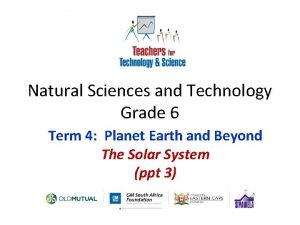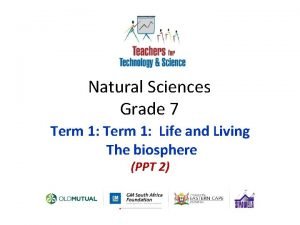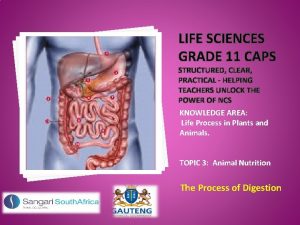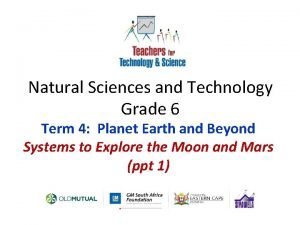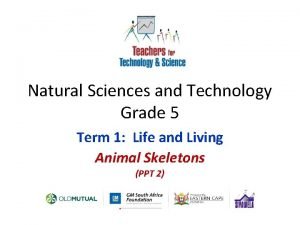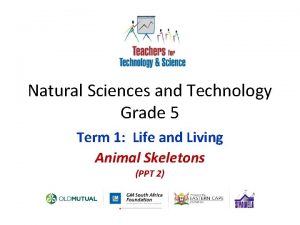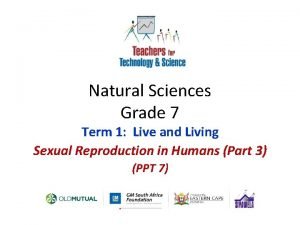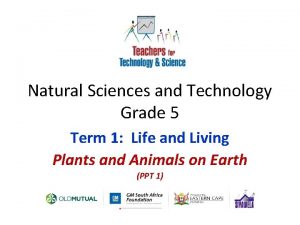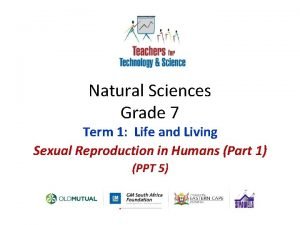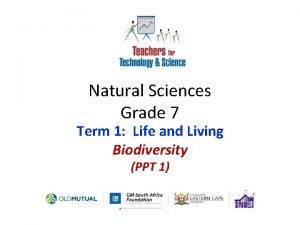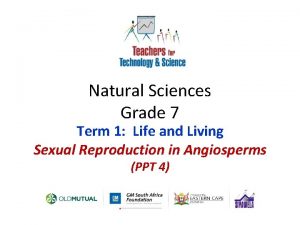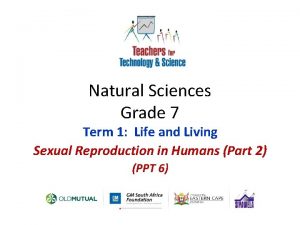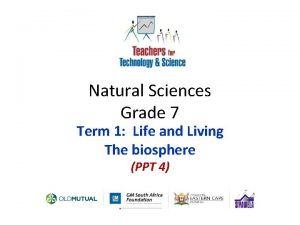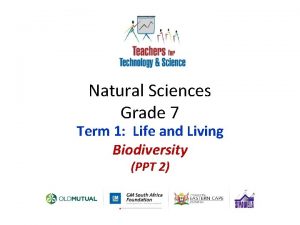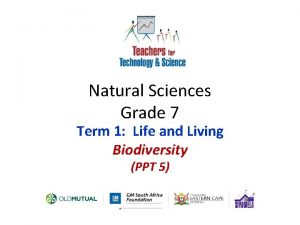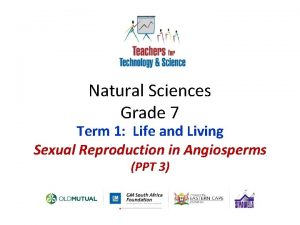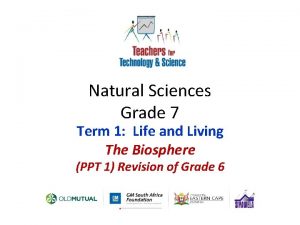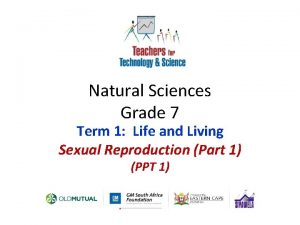Natural Sciences Grade 7 Term 1 Life and
















- Slides: 16

Natural Sciences Grade 7 Term 1: Life and Living Biodiversity (PPT 4)

Topic 2 Biodiversity Diversity of Animals: Invertebrates Natural Sciences – Grade 7

Invertebrates • Animals with no backbones. • There are many animals that belong to this group. • We will have a look at 2 phyla – arthropods – molluscs Natural Sciences - Grade 7

Invertebrates: Arthropods • All arthropods have jointed legs andan exoskeleton. • The exoskeleton contains chitin which makes it strong - it protects the soft tissues on the inside. • It provides a framework for muscles to attach to. • The body of arthropods are divided into segments. • 3 examples of classes of arthropods are insects, arachnids and crustaceans. Natural Sciences - Grade 7

Arthropods: Insects • This group is very diverse – more than a million different species have been identified. • Examples: beetles, locusts, mosquitoes, bees and ants. • Insects are found in nearly all the different environments on the Earth. Natural Sciences - Grade 7

Arthropods: Insects have – • 3 pairs of legs • 1 pair of antennae on the head • a body that is divided into 3 sections: - head with sense organs: eyes, antennae and a mouth - thorax with legs and wings - abdomen that contains intestines and reproductive organs. Natural Sciences - Grade 7

Arthropods: Insects Natural Sciences - Grade 7

Arthropods: Arachnids • Arachnids consist of over 100 000 different species. • Examples: spiders, scorpions, harvestmen, ticks and mites Natural Sciences - Grade 7

Arthropods: Arachnids have – • 4 pairs of legs • no antennae on the head • a body that is divided into 2 sections: - head and thorax (cephalothorax) which is joined into one section; - it carries sense organs, a mouth and legs. Natural Sciences - Grade 7

Arthropods: Arachnids (spider) Natural Sciences - Grade 7

Arthropods: Crustaceans • There about 67 000 different species of crustaceans. • Examples: crabs, lobsters, crayfish, shrimp, krill and barnacles. • They look very different from each other, even though they belong to the same group. Natural Sciences - Grade 7

Arthropods: Crustaceans have – • 5 or more pairs of legs • 2 pairs of antennae on the head • a body that is divided into 2 sections, but sometimes also 3 sections Natural Sciences - Grade 7

Arthropods: Crustaceans (crab) Natural Sciences - Grade 7

Invertebrates: Molluscs • Molluscs have soft bodies, for example snails. • They have a head and a foot region. • The body is covered by a hard shell. • The large majority of molluscs live in the sea. • Molluscs range from species that are microscopically small to the giant squid. Natural Sciences - Grade 7

Invertebrates: Molluscs (land snail) Natural Sciences - Grade 7

Natural Sciences - Grade 7
 Natural science and technology grade 6 term 4
Natural science and technology grade 6 term 4 Grade 6 term 2 natural science
Grade 6 term 2 natural science Biosphere grade 7
Biosphere grade 7 Grade 7 term 4 natural science
Grade 7 term 4 natural science Natural science grade 7 term 3 practical tasks
Natural science grade 7 term 3 practical tasks Human sciences
Human sciences Grade 11 life sciences animal nutrition
Grade 11 life sciences animal nutrition Combining materials grade 5
Combining materials grade 5 Matter and materials grade 7
Matter and materials grade 7 Grade 6 natural science term 2
Grade 6 natural science term 2 Natural science and technology grade 6 lesson plans term 4
Natural science and technology grade 6 lesson plans term 4 Natural science and technology grade 4 worksheets term 1
Natural science and technology grade 4 worksheets term 1 Grade 5 natural science skeleton
Grade 5 natural science skeleton Grade 5 natural science term 1
Grade 5 natural science term 1 Natural science grade 7 term 3 notes
Natural science grade 7 term 3 notes Plants and animals on earth grade 5
Plants and animals on earth grade 5 Grade 6 term 3 natural science
Grade 6 term 3 natural science
